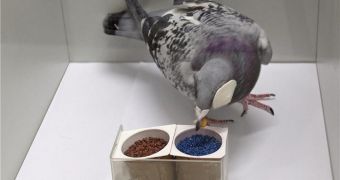A team of experts at the Ruhr-Universität Bochum (RUB), in Germany, is currently taking a closer look at how the two hemispheres of our brains work together when it comes to solving more complex tasks.
One would be tempted to think that brain hemispheres work together all the time, but the fact is that one of them is more active than the other during the vast majority of activities, regardless of the nature of those activities.
However, there are certain tasks that can only be completed when both halves of the brain cooperate. The RUB group is looking into how the hemispheres establish this temporary collaboration, and also into how they end it.
Rub experts Dr. Martina Manns and Juliane Römling are using pigeons to figure out how this happens. They cunningly set up an experiment in which the birds are tested for their abilities to combine complex flows of data from both hemispheres.
After completing a series of studies on pigeon behavior, the research group concluded that environmental factors affecting the birds during their embryonic stage bear the most considerable influence on how the adult pigeons will be able to combine the two data flows.
A paper detailing the study and the experimental setup was published in the latest issue of the top scientific journal Nature Communications, AlphaGalileo reports. For the purpose of this study, Dr. Manns used a natural occurrence in the pigeon development cycle.
When these embryos develop, they turn their head inside the egg in a way that ensures one of the eyes is oriented towards the shell, whereas the other is covered by the body. Developmental processes in both brain hemispheres are influenced by the asymmetrical light stimulation.
For this study, the team allowed a batch of pigeons to hatch in complete darkness, while another was grown normally, in a lit incubator. After a while, the RUB scientists measured the amount of interhemispheric communication both groups displayed.
In the absence of the correct type of light stimulation, the information exchange (cooperation) between hemispheres was found to decay. This discovery has significant implications for treating a number of conditions affecting humans, such as attention deficit hyperactivity disorder (ADHD).

 14 DAY TRIAL //
14 DAY TRIAL //